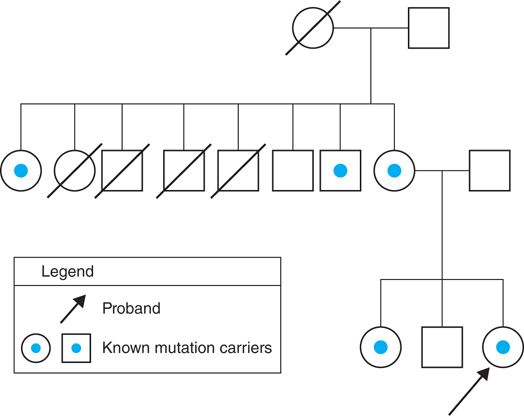FIGURE 51-1 Twelve-lead electrocardiogram from a relative of the proband demonstrating prolongation of the QT interval at baseline.
EXPERT OPINION
• Up to 30% of cases of sudden death in young individuals have no identifiable etiology for death at autopsy, thus raising the possibility of a primary arrhythmic disorder.1
• The acquisition and retention of tissue samples from the deceased in such cases may help in identifying mutations responsible for an inherited channelopathy.
• At present, genetic testing can identify known pathogenic mutations associated with channelopathies such as long QT syndrome (LQTS), short QT syndrome (SQTS), Brugada syndrome (BrS), catecholaminergic polymorphic ventricular tachycardia (CPVT), and certain cardiomyopathies including arrhythmogenic right ventricular cardiomyopathy (ARVC) and hypertrophic cardiomyopathy (HCM).
• If a causal mutation is identified, all first-degree relatives should be tested.
 The finding of the same mutation in a relative along with clinical testing for the relevant clinical condition to establish the severity of the phenotype to conduct risk stratification should be followed by appropriate interventions when necessary.
The finding of the same mutation in a relative along with clinical testing for the relevant clinical condition to establish the severity of the phenotype to conduct risk stratification should be followed by appropriate interventions when necessary.
 Mutation carriers without an expressed phenotype may be observed on a q 1 to 3 year basis for development of phenotypic changes requiring intervention. Relatively benign interventions such as lifestyle modification, avoidance of arrhythmia-provoking drugs (in the case of LQTS and Brugada syndrome), or the use of certain pharmacologic therapies (ie, β-blockers) may be employed in specific situations.2
Mutation carriers without an expressed phenotype may be observed on a q 1 to 3 year basis for development of phenotypic changes requiring intervention. Relatively benign interventions such as lifestyle modification, avoidance of arrhythmia-provoking drugs (in the case of LQTS and Brugada syndrome), or the use of certain pharmacologic therapies (ie, β-blockers) may be employed in specific situations.2
 Relatives without the causal mutation require no further evaluation.
Relatives without the causal mutation require no further evaluation.
• If no causal mutation is identified in the proband, then the role of further genetic testing in first-degree relatives is limited.
 The lack of a causal mutation in the proband does not mean that an inherited etiology for SCD is absent, as genetic testing cannot identify all possible pathogenic mutations.
The lack of a causal mutation in the proband does not mean that an inherited etiology for SCD is absent, as genetic testing cannot identify all possible pathogenic mutations.
 If an inherited channelopathy or cardiomyopathy is still suspected, then follow-up of relatives on a regular basis should be performed to detect for the development of an overt phenotype. The interval between assessments is unknown, but likely every 3 to 5 years unless there is rapid development at the adolescent stage.
If an inherited channelopathy or cardiomyopathy is still suspected, then follow-up of relatives on a regular basis should be performed to detect for the development of an overt phenotype. The interval between assessments is unknown, but likely every 3 to 5 years unless there is rapid development at the adolescent stage.
DIAGNOSIS AND MANAGEMENT
• Suspicion of LQTS was raised based on the strong family history of SCD and the ECG findings from the decedent’s relatives. The family members were counselled with regards to genetic testing and were agreeable to proceed.
• Genetic testing performed from blood collected from the mother identified a pathogenic nonsense mutation in the KCNH2 gene (c. 1184C>T; p.Gln391X).
• Splenic tissue had been frozen following the autopsy, and DNA was isolated. The same mutation found in the family was identified in the decedent, suggesting it contributed to her sudden death.
• A pedigree of affected members is depicted in Figure 51-2.
FIGURE 51-2 Pedigree constructed from detailed family history taken from relatives of the proband. Results of genetic screening for mutation in KCNH2 causing phenotypic long QT syndrome are also depicted on the pedigree.
GENETIC TESTING IN THE SETTING OF SUDDEN UNEXPLAINED DEATH CASES
• Genetic testing for an inherited arrhythmic cause of death may be considered in autopsy-negative individuals who experience sudden death, especially if the circumstances are suggestive of primary arrhythmic conditions, for example, exercise induced, auditory stimuli, nocturnal death (particularly in Asian men) (Table 51-1), and if family members have evidence of a clinical phenotype.3
TABLE 51-1 Specific Circumstances Surrounding the Time of Death of the Decedent May Point to Certain Inheritable Arrhythmic Diagnoses

• In cases of unexplained SCD, tissue from the decedent should be obtained and stored using “DNA-friendly” preservation methods where possible.
Stay updated, free articles. Join our Telegram channel

Full access? Get Clinical Tree



